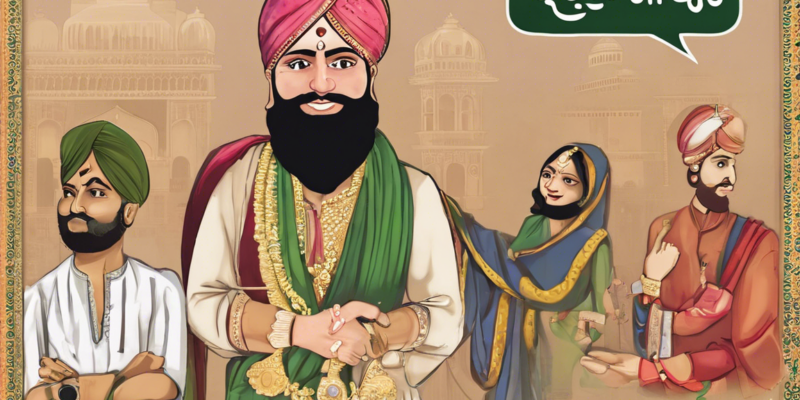As the world becomes more interconnected, the demand for language translation services has seen a significant rise. Punjabi translation services have become increasingly sought after due to the growing importance of the Punjabi language in various sectors such as business, government, and entertainment. In this article, we will delve into the world of Punjabi translation services, exploring their importance, challenges, and best practices.
Why are Punjabi Translation Services Important?
1. Global Reach:
Punjabi is one of the most widely spoken languages in the world, with a large number of speakers in India, Pakistan, and diaspora communities around the globe. This makes professional Punjabi translation services essential for businesses looking to expand their reach to Punjabi-speaking audiences.
2. Cultural Understanding:
Language is deeply intertwined with culture, and accurate translation is crucial for conveying not just words but also cultural nuances. Punjabi translation services help bridge the gap between different cultures, ensuring that messages are accurately conveyed and understood.
3. Legal and Official Documents:
In a globalized world, the need for legal and official documents to be translated into Punjabi has never been higher. This includes contracts, agreements, immigration documents, and more. Professional Punjabi translators ensure that these documents are accurately translated, maintaining the legal integrity of the content.
4. Business Expansion:
For businesses looking to tap into the Punjabi-speaking market, high-quality translation services are essential. Whether it’s website localization, marketing materials, or product descriptions, accurate translation can make a significant difference in engaging with Punjabi-speaking customers effectively.
Challenges in Punjabi Translation Services
While Punjabi translation services are invaluable, they come with their own set of challenges. Some of the common challenges include:
1. Dialectal Differences:
Punjabi is spoken in various dialects across regions, which can pose challenges for translators. Understanding and appropriately translating these dialectal differences is crucial for accurate communication.
2. Complex Script:
The Gurmukhi script used for writing Punjabi can be complex and unfamiliar to those not well-versed in it. Translators need to have a strong grasp of the script to ensure accurate translation.
3. Cultural Nuances:
Punjabi language is rich in cultural references and nuances that may not have direct equivalents in other languages. Translators must understand these nuances to convey the intended meaning accurately.
4. Technical Vocabulary:
In specialized fields such as legal, medical, or technical, translating complex terminology accurately is a challenge. Punjabi translators need to have a deep understanding of these specialized fields to ensure accurate translation.
Best Practices in Punjabi Translation Services
To ensure high-quality Punjabi translation services, following best practices is essential:
1. Use Native Speakers:
Preferably, work with native Punjabi speakers who have a strong command of both Punjabi and the target language for the translation. Native speakers are more attuned to the language’s nuances and cultural subtleties.
2. Maintain Context:
Context is key in translation. Translators should understand the context in which the content will be consumed to ensure accurate and culturally appropriate translation.
3. Quality Assurance:
Implement a robust quality assurance process that includes proofreading and editing by a second linguist. This helps catch any errors and ensures the translation meets the desired quality standards.
4. Stay Updated:
Language evolves over time, and new words and phrases enter the lexicon. Translators should stay updated with the latest trends and vocabulary in both languages to provide accurate translations.
5. Cultural Sensitivity:
Cultural sensitivity is paramount in translation. Translators should be aware of cultural nuances and differences to ensure that translations are culturally appropriate and respectful.
FAQs about Punjabi Translation Services
Q1: What industries benefit from Punjabi translation services?
A1: Various industries benefit from Punjabi translation services, including e-commerce, healthcare, legal, entertainment, and government sectors.
Q2: Can machine translation tools be used for Punjabi translations?
A2: While machine translation tools have their place, they often struggle with complex languages like Punjabi due to its nuances. For accurate and contextually relevant translations, human translators are recommended.
Q3: How much does Punjabi translation services cost?
A3: The cost of Punjabi translation services can vary depending on factors such as the length of the text, complexity, urgency, and the service provider. It’s best to request a quote based on your specific requirements.
Q4: Are there certified Punjabi translation services available?
A4: Yes, many translation agencies offer certified Punjabi translation services for official documents, legal papers, and other important materials that require authentication.
Q5: How long does it take to complete a Punjabi translation project?
A5: The time taken to complete a Punjabi translation project depends on various factors such as the length of the text, complexity, subject matter, and the availability of translators. It’s best to discuss timelines with the translation service provider.
In conclusion, Punjabi translation services play a crucial role in enabling communication and fostering understanding across different cultures and languages. By following best practices and working with experienced translators, businesses and organizations can effectively reach Punjabi-speaking audiences and achieve their communication goals.

